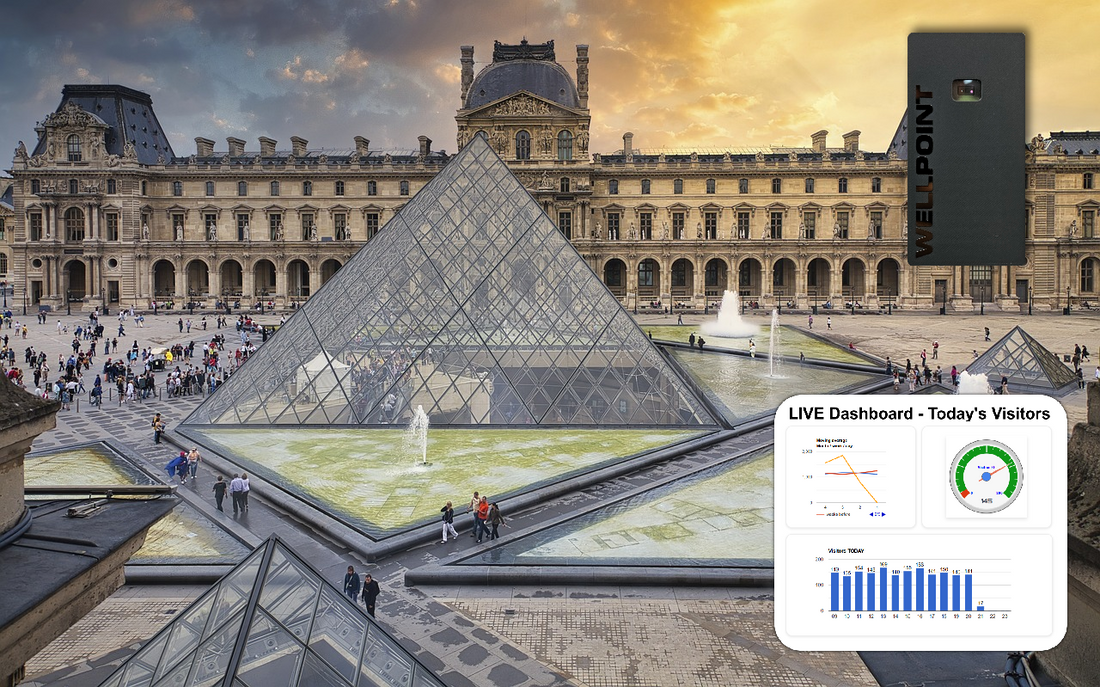
Beyond Art: 5 Ways People Counting Is Revolutionizing the Modern Museum
In an era where the visitor experience is paramount, museum directors and curators are constantly seeking innovative ways to engage their audience and optimize their operations. While the masterpieces on the walls are timeless, the tools used to manage the space around them are rapidly evolving. The silent hero in this transformation? People counting technology.
At Wellpoint, we’ve seen firsthand how accurate, anonymous visitor analytics can completely change the game for cultural institutions. It's about moving from guesswork to data-driven decisions. Here are five ways people counting is revolutionizing the modern museum.
1. Enhancing the Visitor Journey by Eliminating Bottlenecks
Nothing dampens a museum visit like an overcrowded exhibit where you can't get a clear view. People counting systems provide a real-time heat map of your facility, identifying where visitors are congregating and where traffic flow is smooth. This allows you to make simple but effective changes—like moving a popular piece to a larger room or adjusting stanchions—to ensure a comfortable and enjoyable experience for everyone.
2. Making Smarter Curation and Exhibit Design Choices
Which part of your new exhibition is a runaway success, and which part are visitors skipping entirely? Dwell time analytics answer this question definitively. By understanding which exhibits capture attention the longest, curators gain invaluable insights into visitor preferences. This data can inform the layout of future installations and help you create more engaging and impactful stories.
3. Securing Grants and Justifying Funding with Concrete Data
Grant applications and stakeholder reports require more than just passion; they require proof of impact. Accurate visitor statistics are one of the most powerful tools a museum has to demonstrate its value to the community. With detailed reports on daily, weekly, and monthly attendance, you can build a compelling case for funding that is backed by undeniable data.
4. Optimizing Staffing and Operational Resources
Fixed schedules for staffing and cleaning are often inefficient. People counting data reveals your true peak and off-peak hours, allowing you to align your resources with actual demand. This means having more guides on the floor during the busiest times and scheduling maintenance or cleaning when it will cause the least disruption, ultimately saving on operational costs.
5. Creating Personalized Experiences for Visitors
The future of museums lies in personalization. By understanding visitor flow patterns, institutions can begin to offer tailored experiences. Imagine an app that suggests a less crowded path to a visitor’s favorite artist or alerts them when a popular virtual reality exhibit has a short wait time. This level of service, powered by occupancy data, elevates a simple visit into a memorable, personalized journey.
The Future is Data-Driven
The world's most successful museums are embracing technology to better serve their visitors and their mission. People counting is no longer just a tool for retail—it's an essential component of modern cultural management.
Ready to see how Wellpoint can transform your institution? Try our interactive DEMO at wellpoint.cloud and see your space in a whole new light.
